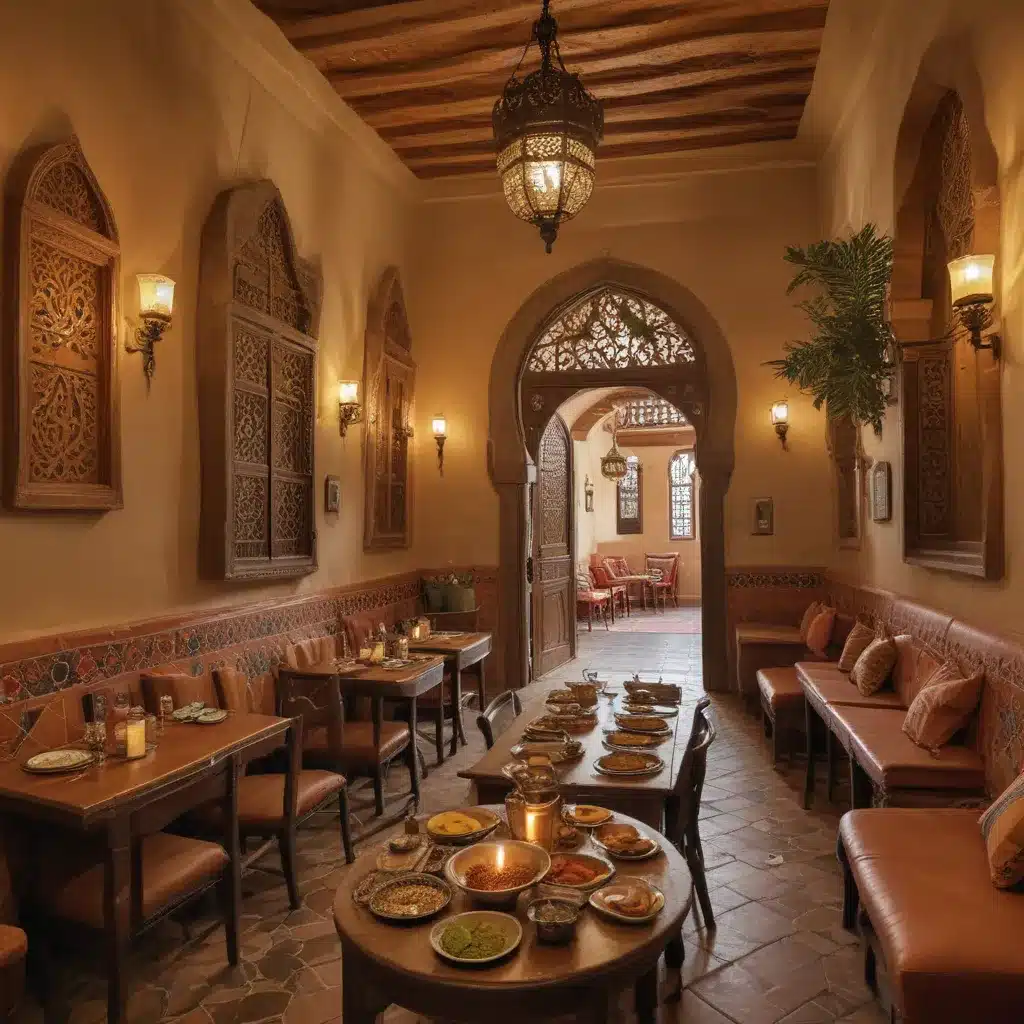
Discover the Vibrant Flavors of Marrakech in the Heart of New York City
As I stepped through the doors of El Bahia, a captivating Moroccan restaurant nestled in the bustling streets of New York City, I was instantly transported to the vibrant souks and captivating alleyways of Marrakech. The aroma of spices, simmering tagines, and freshly baked bread enveloped me, awakening my senses and igniting my culinary curiosity.
A Taste of Moroccan Hospitality
The warm greeting from the host, adorned in a traditional djellaba robe, set the tone for the evening. I was ushered into a cozy dining room adorned with intricately tiled walls, ornate lanterns, and plush seating that evoked the essence of a Moroccan riad. As I settled into my seat, I couldn’t help but marvel at the attention to detail that seamlessly transported me across the Atlantic Ocean.
Stepping into the world of Moroccan cuisine has always been a dream of mine, and El Bahia was about to make that dream a reality. The owner, a passionate culinary enthusiast who had spent years honing his craft in the bustling markets and kitchens of Marrakech, greeted me with a warm smile and a promise of an unforgettable dining experience.
Navigating the Flavors of Morocco
As I perused the menu, I was overwhelmed by the tantalizing array of dishes. From the fragrant chicken tagine with preserved lemons and olives to the aromatic vegetable couscous, each item promised to be a symphony of flavors that would transport me to the heart of Moroccan culinary traditions.
Deciding what to order was a delightful dilemma, but the knowledgeable server, who had clearly been trained in the art of Moroccan gastronomy, guided me through the menu with enthusiasm and expertise. She described the nuances of each dish, the origins of the spices, and the traditional cooking methods that contributed to the depth of flavors.
Immersing in Moroccan Hospitality
As I sipped on a refreshing mint tea, I couldn’t help but feel a sense of anticipation and excitement. The server returned with a basket of warm, freshly baked Moroccan flatbread, which I eagerly tore into, dipping it into a rich, fragrant sauce that had been simmering for hours.
With each bite, I was transported to the bustling souks of Marrakech, where vendors hawk their wares and the air is thick with the scent of spices and the sizzle of meat on the grill. The flavors were a revelation, a harmonious blend of sweet, sour, and savory that danced on my palate, leaving me craving more.
Uncovering the Secrets of Moroccan Cuisine
As I savored the main course, a beautifully presented tagine of lamb and prunes, I couldn’t help but wonder about the stories behind the ingredients and the techniques used to create such a masterpiece. The server, sensing my curiosity, eagerly shared the history and cultural significance of the dish.
She explained how the slow-cooked lamb, infused with aromatic spices like cinnamon and ginger, was a staple in Moroccan households, often served during special occasions and celebrations. The addition of sweet prunes, she revealed, was a nod to the country’s Berber heritage, where the fruit was highly prized for its ability to balance the richness of the meat.
A Sensory Delight
As I listened, I found myself transported to a bustling Moroccan kitchen, where the rhythmic sound of chopping and the sizzle of ingredients in the pan created a captivating symphony. I could almost feel the warmth of the clay tagine, the steam rising and infusing the air with the intoxicating aroma of spices.
With each bite, I savored the tenderness of the lamb, the sweetness of the prunes, and the depth of flavor that had been meticulously layered through hours of slow cooking. It was a culinary experience that transcended mere sustenance, becoming a celebration of Moroccan culture, history, and tradition.
Exploring the Nuances of Moroccan Cuisine
As I neared the end of my meal, I couldn’t resist the temptation to delve deeper into the world of Moroccan cuisine. I inquired about the unique spice blends used in the dishes, and the server enthusiastically shared the stories behind them.
She explained how the fragrant ras el hanout, a blend of over 20 spices, was the backbone of many Moroccan dishes, lending a complex and aromatic depth to the flavors. She also shared the significance of the preserved lemons, which added a tangy, almost floral note to the dishes, and how they were a staple ingredient in Moroccan kitchens.
Embracing the Art of Moroccan Cuisine
As I savored the final bites of my meal, I couldn’t help but feel a newfound appreciation for the rich tapestry of Moroccan culinary traditions. The artistry and dedication that went into each dish were evident in every bite, and I found myself marveling at the layers of flavors and the intricate balance of sweet, sour, and savory.
Walking out of El Bahia, I felt a sense of culinary enlightenment, as if I had been granted a glimpse into the vibrant and captivating world of Moroccan cuisine. It was a dining experience that had left an indelible mark on my palate and my heart, and I couldn’t wait to return and continue my exploration of this rich and fascinating culinary tradition.


